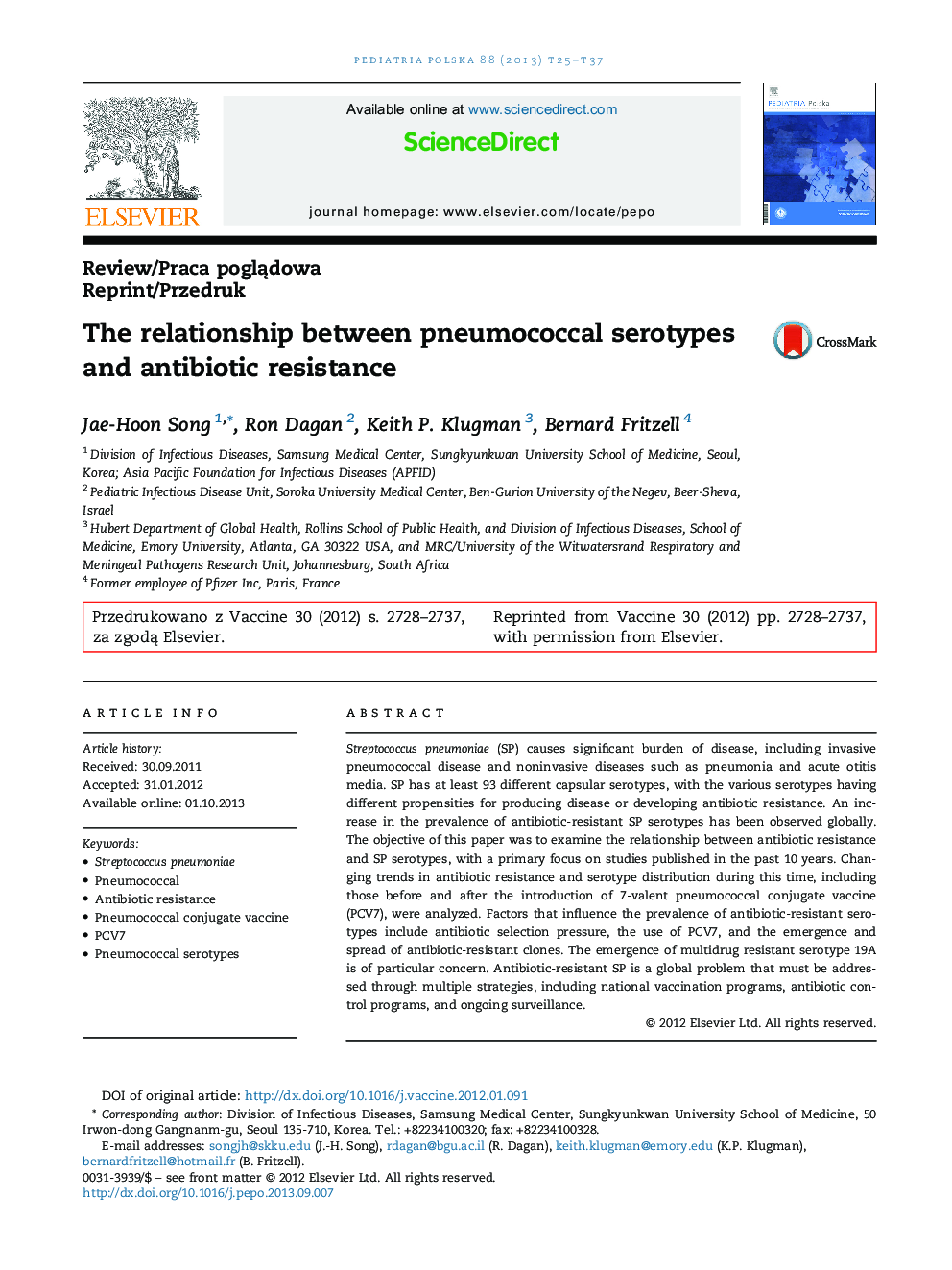| Article ID | Journal | Published Year | Pages | File Type |
|---|---|---|---|---|
| 10162965 | Pediatria Polska | 2013 | 13 Pages |
Abstract
Streptococcus pneumoniae (SP) causes significant burden of disease, including invasive pneumococcal disease and noninvasive diseases such as pneumonia and acute otitis media. SP has at least 93 different capsular serotypes, with the various serotypes having different propensities for producing disease or developing antibiotic resistance. An increase in the prevalence of antibiotic-resistant SP serotypes has been observed globally. The objective of this paper was to examine the relationship between antibiotic resistance and SP serotypes, with a primary focus on studies published in the past 10 years. Changing trends in antibiotic resistance and serotype distribution during this time, including those before and after the introduction of 7-valent pneumococcal conjugate vaccine (PCV7), were analyzed. Factors that influence the prevalence of antibiotic-resistant serotypes include antibiotic selection pressure, the use of PCV7, and the emergence and spread of antibiotic-resistant clones. The emergence of multidrug resistant serotype 19A is of particular concern. Antibiotic-resistant SP is a global problem that must be addressed through multiple strategies, including national vaccination programs, antibiotic control programs, and ongoing surveillance.
Keywords
Related Topics
Health Sciences
Medicine and Dentistry
Dermatology
Authors
Jae-Hoon Song, Ron Dagan, Keith P. Klugman, Bernard Fritzell,
